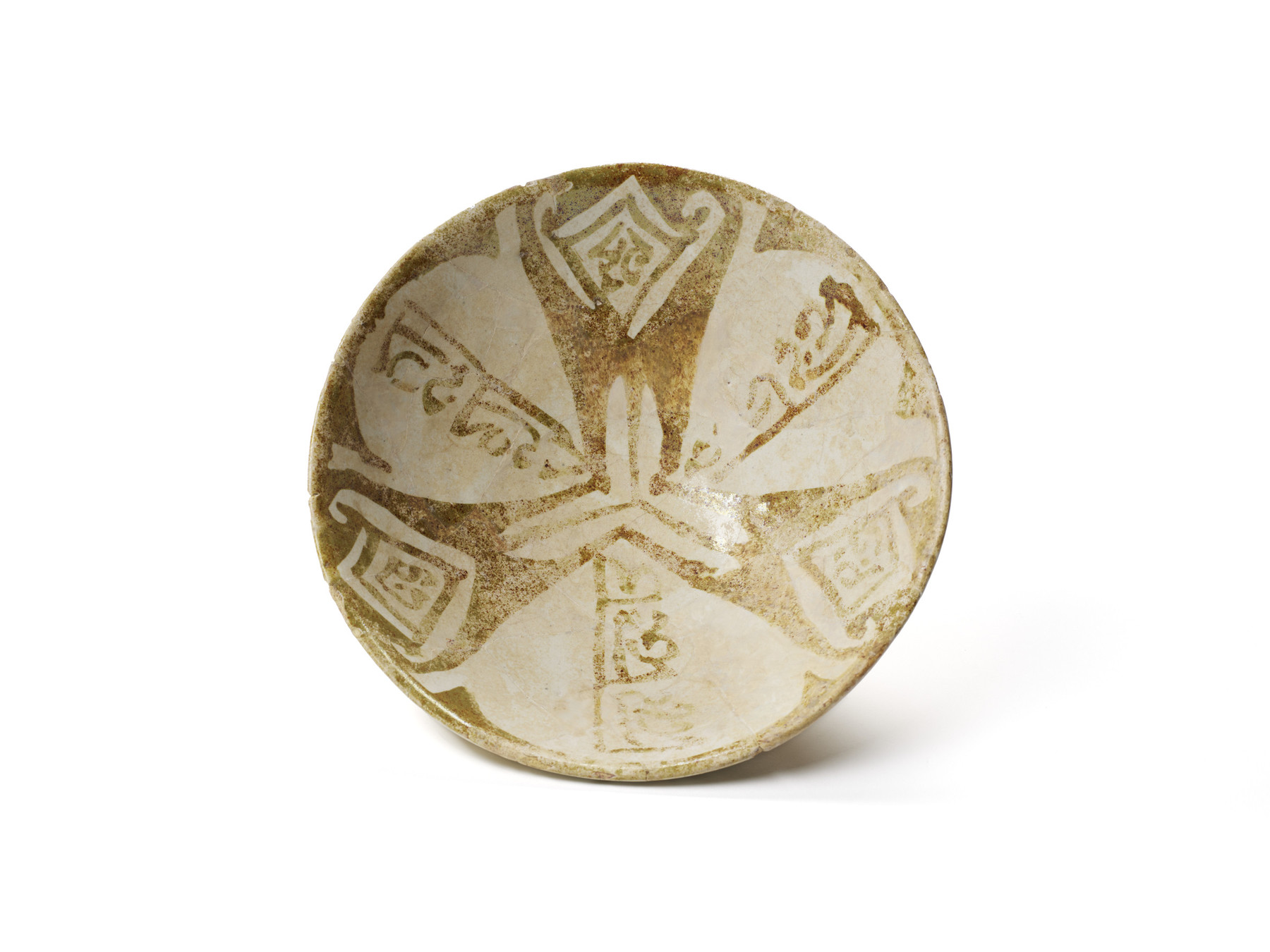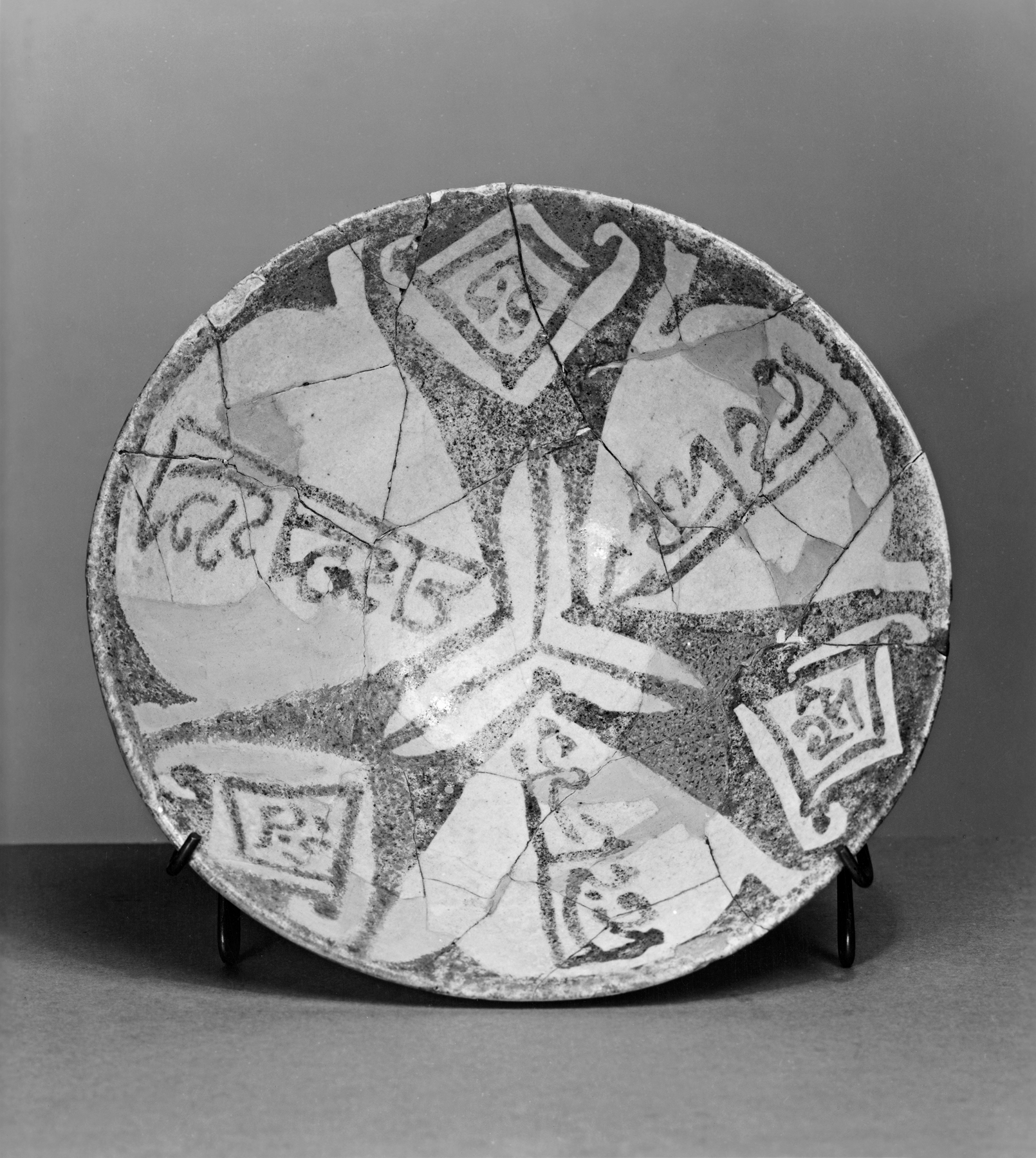Lusterware Bowl
(Islamic World )
In Arab countries and Muslim realms in the Mediterranean region, artistic innovation flourished in the 9th-14th centuries. Lusterware was among the most original development of Arab potters, who mixed silver sulfides and copper oxides to create a shiny, metallic sheen on the surface of glazed earthenware vessels, such as this bowl.
Provenance
Provenance (from the French provenir, 'to come from/forth') is the chronology of the ownership, custody, or location of a historical object. Learn more about provenance at the Walters.
Estate of D.G. Kelekian [date and mode of acquisition unknown]; Walters Art Museum, 1951, by purchase.
Conservation
| Date | Description | Narrative |
|---|---|---|
| Treatment | other | |
| 10/1/1951 | Treatment | repaired |
| 1/1/1982 | Treatment | repaired |
| 7/7/1982 | Treatment | cleaned |
| 9/27/1982 | Treatment | stabilized; cleaned; loss compensation; reconstructed |
| 9/6/2001 | Treatment | coated; loss compensation; repaired |
| 9/7/2001 | Treatment | loss compensation |
Geographies
Egypt (Place of Origin)
Measurements
H: 2 3/4 x Diam: 8 1/4 in. (7 x 21 cm)
Credit Line
Museum purchase, 1951
Location in Museum
Accession Number
In libraries, galleries, museums, and archives, an accession number is a unique identifier assigned to each object in the collection.
In libraries, galleries, museums, and archives, an accession number is a unique identifier assigned to each object in the collection.
48.2037






